Solar eclipse of September 20, 1960
A partial solar eclipse occurred on September 20–21, 1960. A solar eclipse occurs when the Moon passes between Earth and the Sun, thereby totally or partly obscuring the image of the Sun for a viewer on Earth. A partial solar eclipse occurs in the polar regions of the Earth when the center of the Moon's shadow misses the Earth. It began in northeast Russia near sunrise on September 21, and ended near sunset over North America on September 20, one day earlier because of the effects of the International Date Line.
| Solar eclipse of September 20, 1960 | |
|---|---|
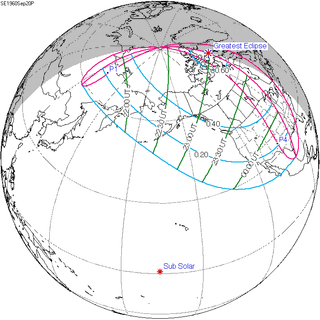 Map | |
| Type of eclipse | |
| Nature | Partial |
| Gamma | 1.2057 |
| Magnitude | 0.6139 |
| Maximum eclipse | |
| Coordinates | 72.1°N 74.1°W |
| Times (UTC) | |
| Greatest eclipse | 22:59:56 |
| References | |
| Saros | 153 (6 of 70) |
| Catalog # (SE5000) | 9421 |
Related eclipses
Solar eclipses of 1957–1960
This eclipse is a member of a semester series. An eclipse in a semester series of solar eclipses repeats approximately every 177 days and 4 hours (a semester) at alternating nodes of the Moon's orbit.[1]
| Solar eclipse series sets from 1957–1960 | ||||
|---|---|---|---|---|
| Descending node | Ascending node | |||
| Saros | Map | Saros | Map | |
| 118 | 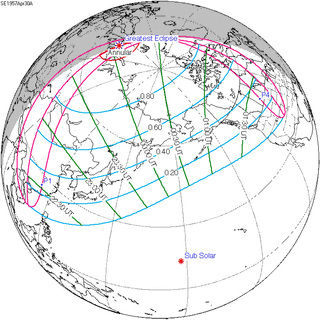 1957 April 30 Annular (non-central) |
123 | 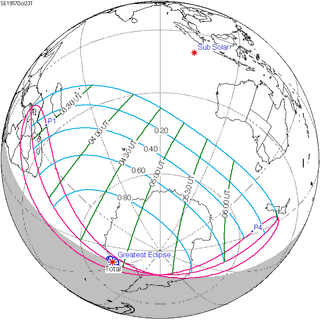 1957 October 23 Total (non-central) | |
| 128 |  1958 April 19 Annular |
133 |  1958 October 12 Total | |
| 138 | 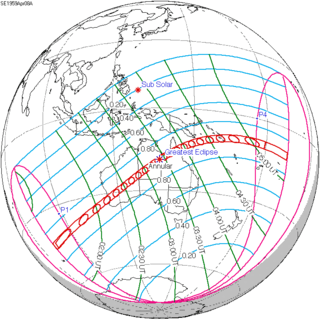 1959 April 8 Annular |
143 | 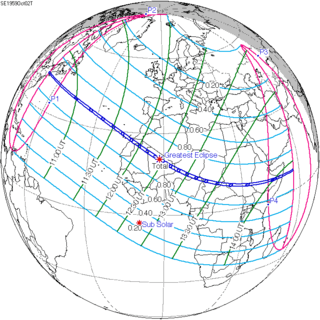 1959 October 2 Total | |
| 148 | 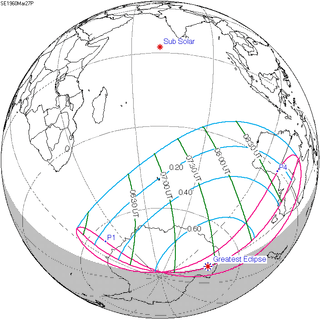 1960 March 27 Partial |
153 |  1960 September 20 Partial | |
References
- van Gent, R.H. "Solar- and Lunar-Eclipse Predictions from Antiquity to the Present". A Catalogue of Eclipse Cycles. Utrecht University. Retrieved 6 October 2018.
- Eclipse of the Sun of September 20, 1960—Sky and Telescope magazine, volume 20, page 129.
External links
This article is issued from Wikipedia. The text is licensed under Creative Commons - Attribution - Sharealike. Additional terms may apply for the media files.
.jpg)
